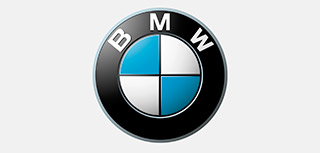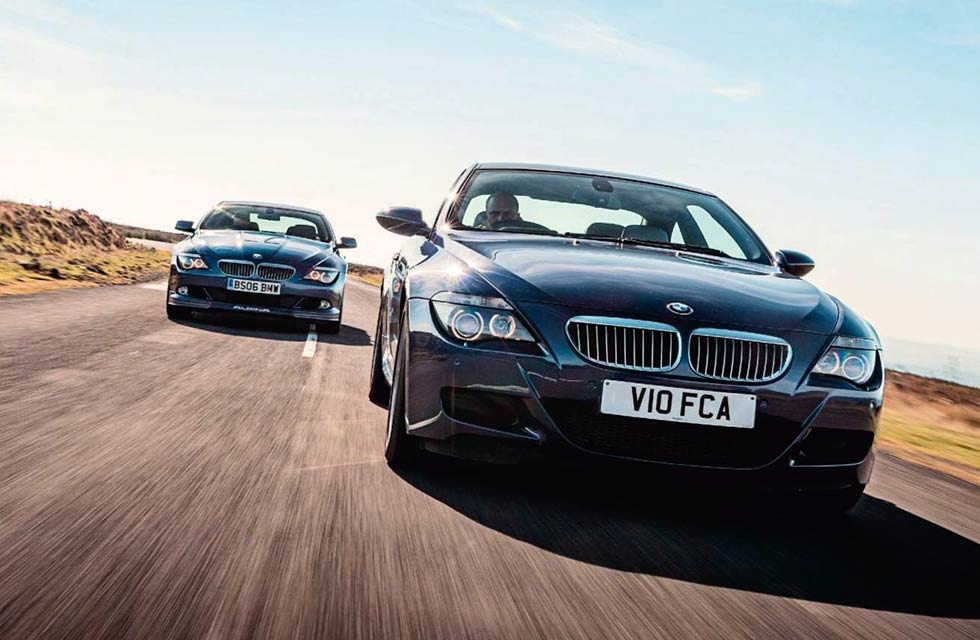
Driving M6 or B6S, which is the right 6 Series for you? The Alpina has effortless supercharged V8 thrust, the M6 has that masterpiece V10 engine. Hmm… Naturally aspirated V10 M6 takes on supercharged Alpina B6S in a 1023bhp battle for GT glory. Propelling their drivers to distant vanishing points and beyond while compressing time is the forté of these extreme manifestations of BMW’s E63 6 Series. So which one’s the daddy – the M6 or the Alpina B6S? Words Nathan Chadwick. Photography Alex Tapley.
HEAD TO HEAD: BMW M6 VS ALPINA B6S
Two takes on the ultimate 6 Series – naturally aspirated V10 or supercharged V8?
HORIZON HUNTERS
Crafting a great grand tourer isn’t easy. There’s a formula: big, lusty engine at the front, power to the rear, a plush interior and the ability to make crossing Europe feel like a trip to the supermarket.
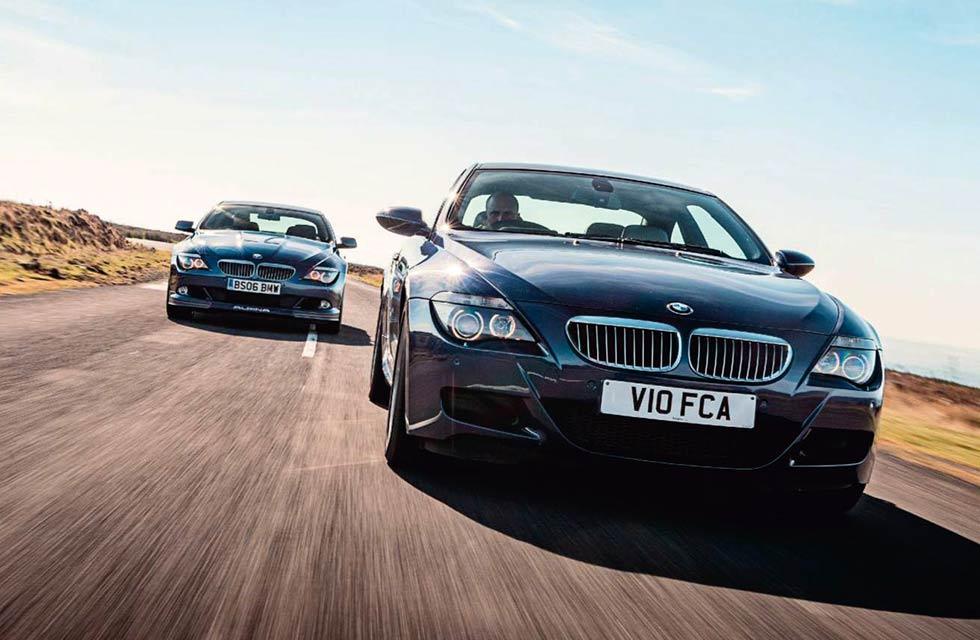
BMW had experienced mixed results in the GT market. The BMW E9 and E24 6 Series, E31 8 Series were well-loved, if not blessed with the same low-down thump of GT rivals from Porsche and Mercedes-Benz. Its efforts to counter them with the more expensive, softer 8 Series didn’t come off – it arrived just as consumer tastes were changing, and in time for a worldwide recession that hammered luxury car sales in the early 1990s.
’AS A GT, THE ALPINA TAKES IT BY A COUNTRY MILE. BUT IT’S NOT THE ULTIMATE E63’
For the millennium, BMW reverted to the 6 Series name, and set out to shock. Borrowing heavily from Chris Bangle’s 1999 BMW Z9 concept car, Adrian van Hooydonk’s finished design was controversial, coming in the midst of the furore over BMW’s design direction. ‘Too ugly!’ cried the critics, with the oddly-styled posterior being one of the major criticisms.
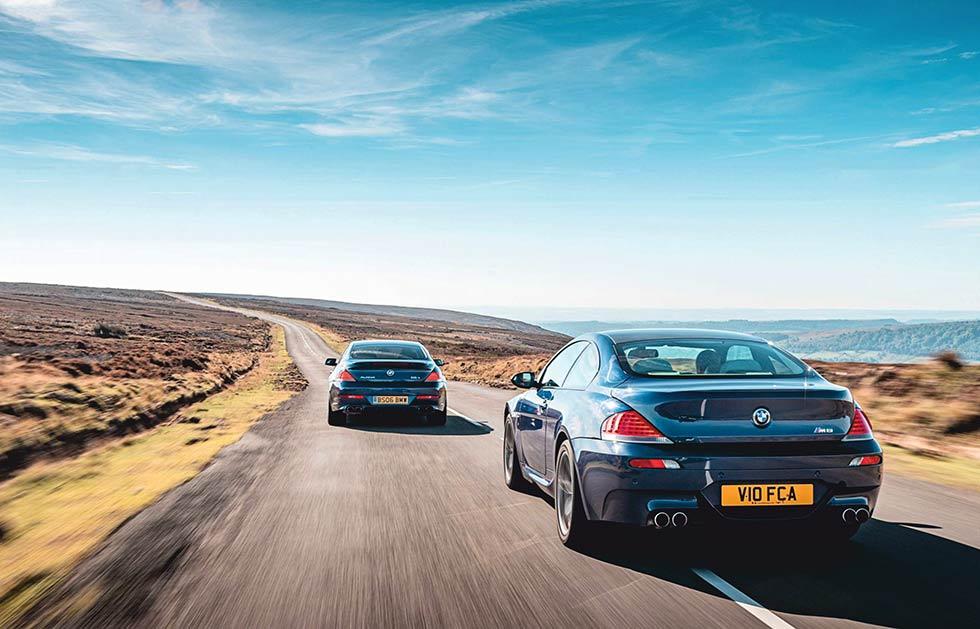
The public thought differently, with around 130,000 examples of varying flavours finding homes in six years. That’s 100,000 more than the 8 Series managed in ten years, and 50,000 more than the E24 did in 13 years.
So, 15 years after the first E63 6 Series rolled out of showrooms, we’ve brought together two of its most extreme incarnations. First, the storming ten-cylinder, 500bhp M6. Very little gets near it for the £15,000 you’ll need for a useable car, in terms of performance per pound. The best go for just shy of £30,000 – and for that money, only a Bentley Continental GT or a leggy Aston-Martin DB9 comes close for blood-curdling punch. Or does it?
’THE ALPINA LOOKS LIKE IT’S BEEN MAINLINING STEROIDS THROUGH THE DUCTS ON ITS BONNET’
Say hello to the Alpina B6, here in super-limited edition S form. You trade two cylinders for a supercharger, and in return you get more power and, crucially, much more torque than the M6. A good one will trouble you for £30k, if you can find one – if the M6 is rare, then the B6 is exclusive.
So, two takes on the ultimate E63, 1023bhp and an audience comprising North Yorkshire’s most bemused sheep. Which one nails the GT brief?
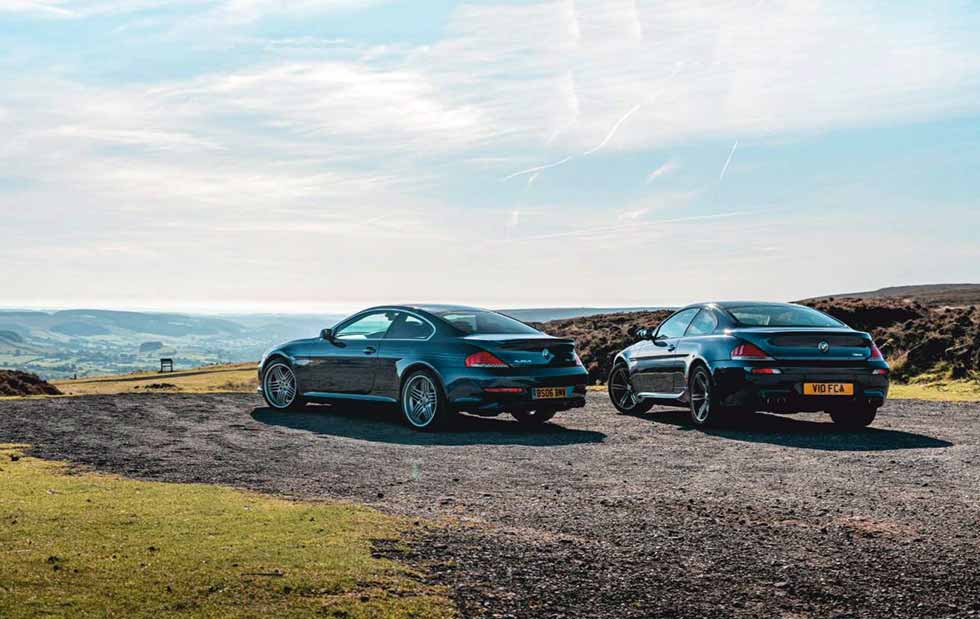
It’s never been a beautiful car, the M6. In the mid-2000s we were Blessed with all sorts of mega-power GTs and only the Bentley Continental GT could rival it for brutal presence at the expense of Aston and Maser-style prettiness. Next to the Alpina, however, the M6 seems subdued. In isolation that might seem ridiculous.
’THE S85 HOWLS LIKE A HORNY WOLF, TEARING INTO YOUR EARS LIKE YOU’RE STOOD NEXT TO A BASSBIN AT AN ILLEGAL RAVE’
The M Department specced huge 19in alloys, quad pipes and an aggressive bodykit that added muscularity to the slightly squidgy 6 Series shape. The Alpina, on the other hand, looks like it’s been mainlining steroids through the cooling ducts on its carbon-fibre bonnet. This item was bespoke to the S model, but they all got the gargantuan splitter bearing the Alpina name and the equally engorged rear diffuser. Those gorgeous alloys measure 20in, and there’s Alpina pinstriping too. The cliché goes that Alpinas are the thinking gentleman’s Beemer, and more discreet, but that’s clearly not the case here. It’s an acquired taste, perhaps, but for me it’s doing the business in the low sunlight. That’s not to say there isn’t intrigue to the M car – far from it. The front wings are formed from thermoplastic to save weight, the bonnet and doors are aluminium and the roof is carbonfibre in a bid to aid the diet plan and lower the centre of gravity. It’s still a heavy car at 1710kg, but then it does have ten cylinders to carry.
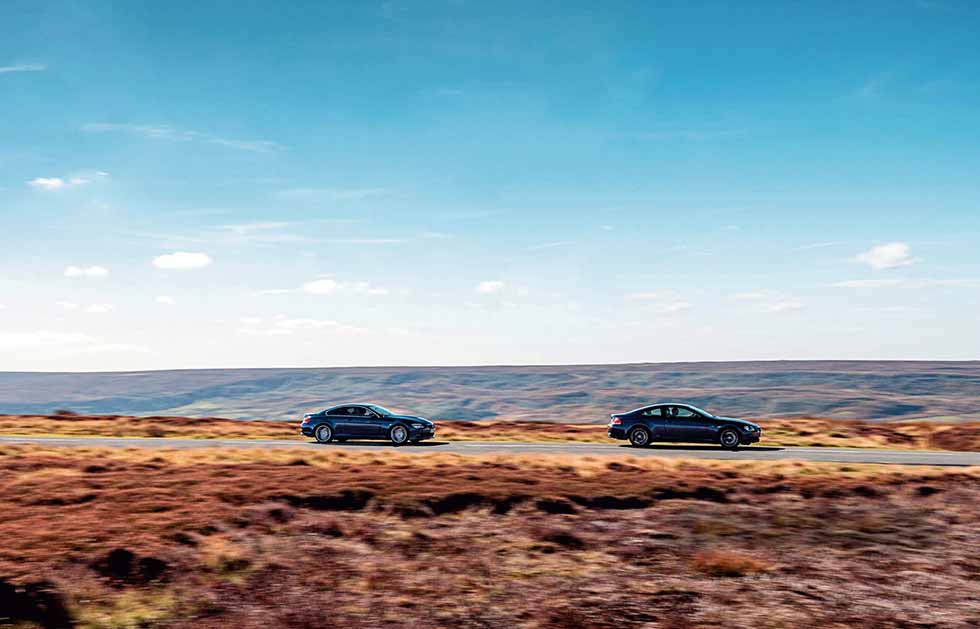
For many, the S85 V10 is reason enough to choose the M6 – it’s a persuasive argument. Along with Mercedes-Benz’s insane 6.2-litre M156 engine, it represents the pinnacle of the mainstream naturally aspirated engine. In an era of electrification and hybridisation, it’s a little hard to fathom how such enormous, free-revving engines graced saloons and mainstream coupés. And in the case of the M156, an MPV.
No such sullying of the bloodline for the S85 – it appeared only in the M6, M5 and a Weismann. It’s a powerplant that clearly deserved to live in a supercar, but we can only ponder the ‘what ifs’ while gazing at grainy Google image results for 2008’s M1 Homage concept.
Accessing that power requires a lot of set up. There’s a pleasing whump on start up and a fairly restrained idle, which gives you time to concentrate. The default setting is P400, which helps to save fuel and smooth out the shifts in full auto mode, while P500 opens up all the power. P500 Sport sharpens up throttle response even further. You can do all this via iDrive, but you can just hit the M button on the steering wheel and the Sport button on the centre console.
So far, so logical. Quite why there’s a need for seven flavours of gearchange severity I’m not sure – surely three would do, or indeed seven gears. While I’m no Luddite when it comes to these things, there’s a sense that the engineers offered this level of flexibility because they could, rather than because they should.
Or perhaps the M6 has an identity crisis, borne from a need to cater to a rapidly growing American market for BMWs that demanded comfort, yet also A European heritage of high-revving, screaming engines – so you end up with a bit of both. In a bid to be a jack of all trades, does it master neither?
In Comfort mode it’s still a little soggy, but that’s what Comfort mode is for. Switching to the firmer Electronic Damper Control modes doesn’t flummox it either. In its firmest setting it’s understandably crashy, but still surprisingly capable. However, this North Yorkshire road was resurfaced two years ago, and it’s still very smooth. Since the test I’ve borrowed an M6 and taken it down a regular A-road… I’m still not sure my kidneys have forgiven me. I’m sure there’s a wonderful set-up just for me, but hunting for it means taking your eyes off the road.
You really don’t want to be doing that. Not with 500bhp lurking just a toe-prod away. This car isn’t just fast, it’s more otherworldly than that – the only thing that can match the rampant rate at which big numbers appear is the width of your eyes as you encroach on 8250rpm. BMW slapped a 155mph limit on it, but with the restrictions taken off this is a 205mph car – and the way it pulls all the way to the redline makes it easy to believe.
’TWO TAKES ON THE ULTIMATE E63, 1023BHP AND NORTH YORKSHIRE’S MOST BEMUSED SHEEP’
As you light up the yellow and orange lights on the rev counter the S85 howls like a horny wolf, tearing into your ears like you’re stood next to a bass bin at an illegal rave. It’s the kind of all-consuming sound that you can feel deep in the centre of your brain. Pulse-raising? You bet.
There is a caveat, though. The M6 only unleashes such goods at a fairly lofty 5000rpm, and ‘only’ 383lb-ft, which means keeping it on the boil for those big-lunged overtakes.
That’s more of an issue than it at first seems. In sixth at naughty speeds the M6 is quiet – perhaps a little too quiet. Stirring the pot means dropping two cogs, compressing your spinal cord and troubling your neck muscles – and risking waking the dead as all ten cylinders get excited. While amusing at first, by the end of a 300- mile trip you might be wishing for the effortless heave of something with more low-down thump. And a cushion.
Slackening off the gearbox’s severity doesn’t make that much difference; full auto mode is a bit like sitting on a malfunctioning washing machine. Best to leave it in manual mode, as that means you can really enjoy the M6’s party piece.
For such a big, heavy car, the M6 Corners with almost M3-like enthusiasm. There’s a touch of understeer on the way in, but the sharp, well-weighted steering has plenty of feedback, giving you the confidence to commit to ever-tighter apexes. It is here where the car starts to shrink around you, giving you the confidence to push harder and harder. Suddenly, it feels like a proper M car.
And, just like a proper M car, the brakes leave a little to be desired. It doesn’t take long before your confidence starts to sap away in time to the rapidly diminishing feel – add in a jiggly ride and exploiting even half of that 500bhp becomes a challenge on all but the smoothest of roads. The interior is a disappointment too – it’s nice, in that crisp, Munich airport, brushed aluminium kind of way that all Beemers of the era seem to have. And that’s the problem – it doesn’t feel particularly special. In the M635 CSI E24 you got lashings of hand stitched leather, and the 8 Series E31 interior is a work of sci-fi-infused art.
Without the optional five grand leather interior, the M6’s cabin could be confused for a base model 3 Series. There’s nothing base model about the speed, though. Light up the upper echelons of the rev counter on the right road and it’s easy to forgive the M6 its foibles, such is the sheer addictiveness of that rampant engine.
It’s just a shame that on the wrong type of road – the one that is depressingly more common in the UK – the M6 experience starts to sour. Is its V10 alone enough to sway favour? Switch to the Alpina and it’s very clear the B6 S is a very different beast. You can tell the instant you begin to stir the 4.4-litre N62 V8 into life. The bass-laden throb is more muscular at idle, a portent for the sheer force that you’re about to unleash. Alpina’s take on the N62 has a bespoke, Steyr-built cylinder block, forged crankshaft, Mahle pistons… oh, and a massive centrifugal supercharger, and an Akrapovic exhaust system. The normal B6 delivers 486bhp, so a little down on the M6, but it’s the torque that matters – 516lb-ft at 4250rpm equates to a third more torque than the M6, and 1000rpm lower down the rev range. The S version that we’re in today ups the equine count to an M6-smashing 523bhp, with the torque boosted to 535lb-ft byway of a new supercharger compressor and reworked variable valve timing on the intake.
It’s easy to be dazzled by the figures, but the first thing that hits you when you step into the Alpina is the marked difference in materials. The quality and softness of the leather is much closer to a Bentley, and the piano black panelling, bespoke blue Alpina dials and hand-stitched leather steering wheel all combine to make simply sitting in the B6S an event.
It’s very clear that, although more aggressive on the outside, it’s certainly a much more measured machine than the M6. The ZF 6HP gearbox is a conventional automatic with button operated shifts. Think more Mercedes-Benz AMG or Bentley when it comes to fingertip feeling – it’s a slower process than the M6’s SMGIII unit, with nowhere near as much haptic pleasure from the interface. That’s not really the point, though.
This is a car designed purely as a GT, not a supercar in GT finery. That means that the torque wave is instant, and when the supercharger spools you’re catapulted forwards with the force of a comet hitting your back. The gearbox, though not ideal for B-road thrill-style sharp changes, is perfect for those long-range slingshots past dawdlers. It’s less intelligent on the tight, hilly roads through Castleton’s villages, struggling to work out when to change down, but that’s what your left thumb’s for…
You’re likely to be less busy with the steering – though the Alpina can be hustled along tighter roads, that’s not what this car is all about. The steering feels heavier, slightly less direct – exactly what you want at three-figure speeds on the autobahn. It’s the kind of car that could sit at 140mph for hours, long sweepers dispatched with nonchalant ease. It doesn’t let itself down when cornering, but there isn’t the M6’s immediacy, nor its rigid lack of roll. In many ways that’s a good thing – the Alpina doesn’t feel like it’s about to be skewed sideways by mid-corner bumps or corrugations – it feels thoroughly planted in away the M6 simply doesn’t.
Alpina’s mastery of suspension is legendary – for years they’ve honed the sweet spot between sportiness and comfort. There’s a pure assuredness to the way the Alpina soaks up the more corrugated sections of Blakey Ridge. Alpina did offer two settings for the driver to choose from, one predictably harder than the other, but both do a far better job of stomaching lumps and bumps than the M6 in its soggiest setting. While there’s a degree more body roll in the B6S than the M6, it doesn’t upset the dynamics as starkly as the M Department machine. It seems as if Buchloe felt more confident in its decisions to choose best for its customers, rather than Munich’s decision to leave it up to the owner. You do, however, feel the Alpina’s greater bulk on corner entry – there’s a touch more understeer than the M6, which, thanks to the Alpina’s vast, low-down torque, can be counteracted with a healthy slug of throttle down oversteer. But to do so seems rather out of keeping with the Alpina’s easygoing nature.
Much like the M6, the Alpina’s brakes don’t quite have the same passion for reeling in the performance as the engine does for doling it out, despite the discs coming from the Middle Eastern-spec 760Li – the biggest in the BMW parts bin. They are staggeringly effective in the short term, though exercise them too often and they begin to fade.
It’s best to concentrate on the Alpina’s unique skillset – this is a car that’s perfect for long motorway slogs. But does the M6’s supercar alter ego make that the more satisfying treat?
Alpina wallops M6 for torque. Extra-large, comfortable and thirsty. And an Alpina. Alpina soaks up bumps much better than the M6. Rear diffuser aids autoroute toll getaways. Alloys measure a Jodrell Bank troubling 20in. Carbon fibre bonnet bespoke to the B6S. Eight cylinders and a supercharger… …or ten naturally aspirated pots? Brake fade limits fun in both cars. M6 takes it on revs and handling. Alpina cabin has a more special feel. M6 interior fails to raise the spirits. Big, but an inch smaller than the Alpina’s. Discreet gent’s BM. Er, don’t think so… Quite a sight. The sound’s something else…
The Modern Classics view
Which is the best car here depends on the question being asked – whether it’s what’s the best GT car, or what’s the ultimate version of the E63?
If it’s the former, the Alpina takes it by a country mile – or, indeed, an entire country, such is its ability to chomp miles. Where the M6 makes you work to keep it on the boil, the B6 is effortless. Point it at the horizon, hold on, watch the world compress…
Rarity will always keep Alpina prices at a premium, but its abilities and character justify the extra wedge. If you can live with LHD, it’s worth importing one from Europe.
But it’s not the ultimate E63, and that has to go to the M6. It’s a flawed car – it never quite knows what it’s trying to be, stuck in limbo between luxury GT and hardcore weapon. It doesn’t quite convince on the latter, even though it corners far better than a 1785kg coupe has any right to.
You’ll find it easy to forgive, though – revving it out to 8000rpm never gets boring. It’s the kind of car we’re never going to see again, which makes it the definition of a modern classic, and we foresee the era of cheap M6s coming to an end soon. If you’re tempted, count to ten and hit the classifieds.
Thanks to Alpina owner Simon Slater and BMW owner Sam Wheeler.
Specifications BMW M6 E63
Engine 4999cc, 10-cyl, DOHC
Transmission RWD, 7-speed SMG III
Power 500bhp @ 7750rpm
Torque 384lb-ft @ 6100rpm
Weight 1785kg
performance
0-60mph 4.2sec
Top speed 155mph
Economy 19mpg
What to pay
Concours £30,000
Good £20,000
Usable £15,000
Project £12,000
Specifications Alpina B6 S E63
Engine 4398cc, 8-cyl, DOHC
Transmission RWD, 6-speed auto ZF 8HP
Power 523bhp @ 5500rpm
Torque 535lb-ft @ 4750rpm
Weight 1720kg
performance
0-60mph 4.5sec
Top speed 197mph
Economy 19mpg
What to pay
Concours £35,000
Good £30,000
Usable £25,000
Project Unlikely
Alpina B6 S E63 3 UK cars left
BMW M6 E63 429 UK cars left
WHERE IT ALL BEGAN: THE Z9
The E63’s distinctive looks can be traced back to the Chris Bangle-designed Z9 concept cars – revealed in four-seat coupe form at the 1999 Frankfurt Auto Show, while the 2000 Paris Auto Show saw the convertible version unveiled. The body was made from carbon-fibre over an aluminium spaceframe, while the doors opened in a choice of two ways; in the conventional manner, and as a gullwing.
The interior helped Preview forth coming iDrive technology, with a very similar control interface. The interior was designed to be as simple as possible – the speedo and tacho were on a monitor, while just a light switch and start button were on the dash. The engine was about as far away from the M6 V10 as possible – a V8 turbodiesel from an E38 7 Series. It developed 245bhp and 413lb-ft.
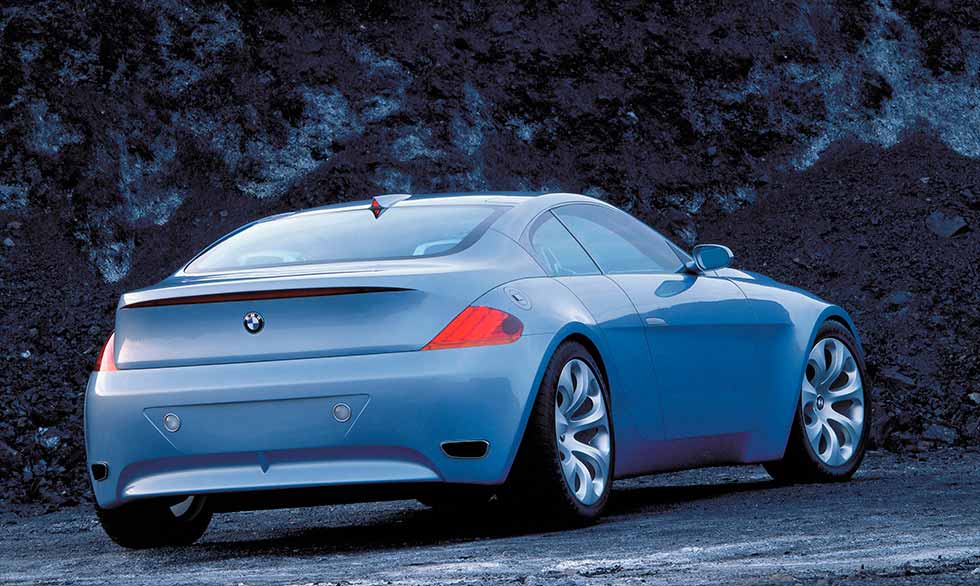
Many of the Z9’s design cues were advanced to the E63, though Adrian van Hooydonk is credited with the E63’s final form.
WHEN ALPINA WENT RACING
Alpina helped develop the E9 CSL Batmobiles that were so successful in 1970s touring car racing. After pulling out in 1977 to concentrate on its road cars, there was a short-lived return in the late Eighties, with an BMW E30 M3 in the DTM. The next foray was with the B6 E63 in 2009. Its 523bhp supercharged 4.4-litre V8 could hit 62mph in 3.9sec and had a six-speed sequential ’box.
Entered under GT3 regulations, Alpina cars raced in the FIA GT3 European Championship, Spa 24 Hours, Nurburgring 24 Hours and several national series, taking four victories. For 2010, Alpina supported privateer teams, with two victories at the Nürburgring a highlight.
In 2011 Engstler Motorsport took the B6 GT3 to the German GT3 Championship title. The Alpina works team returned in 2012, but the competition had moved on – still, Alpina finished a creditable fourth in the teams’ title, before pulling out at the end of the season.
NEXT GENERATION
When the last E63 M6 shrieked away from the production line, it was clear the V10 wouldn’t return for the next one. When the F13 appeared in 2012, it got the S63 B44T0 twin-turbocharged V8. The F13 M6 chucked out 553bhp, growing to 567bhp with the first Competition Pack, then 591bhp with the second. Torque was 502lb-ft, growing to 516. It was 140kg heavier than the E63, but you could have it in convertible and two-door or four-door coupe (F06) versions.
Alpina’s response was the B6 Bi-Turbo with an N63 V8 twin-turbo which provided 533bhp and 516lb-ft of torque, with an eight-speed ZF auto (ZF 8HP) (the M6 had manual and a seven-speed dual-clutch paddleshift). The Edition 50 celebrated the company’s 50th birthday, and boosted power to 600bhp.
Revisions in 2015 took the B6 to 611bhp. Like the M6, the Alpinas could be had in two-door and four-door coupe forms. Production of both ended in 2018, and the 6 Series name retired in favour of the 8 Series.

